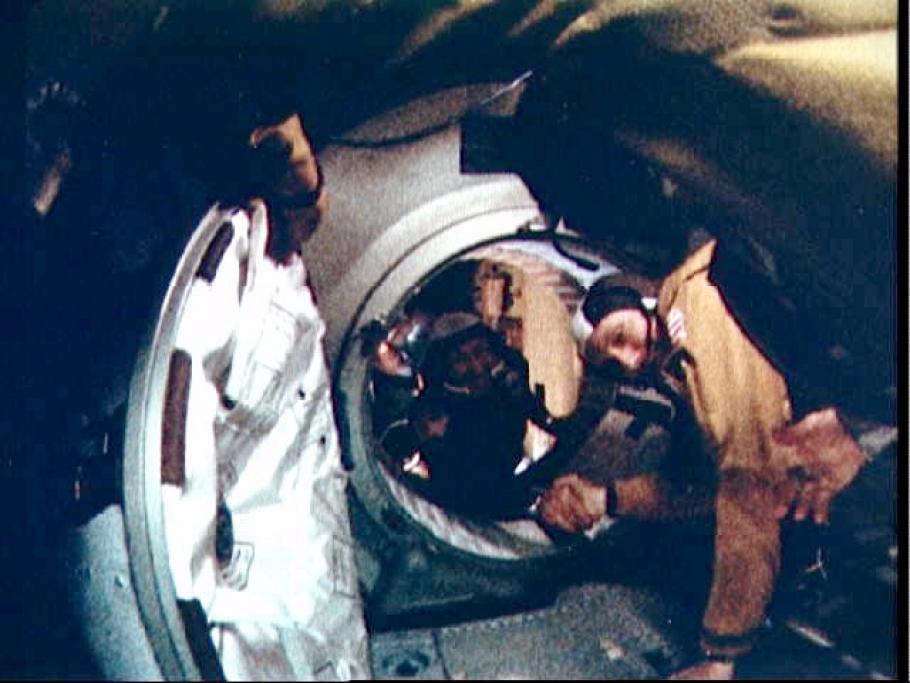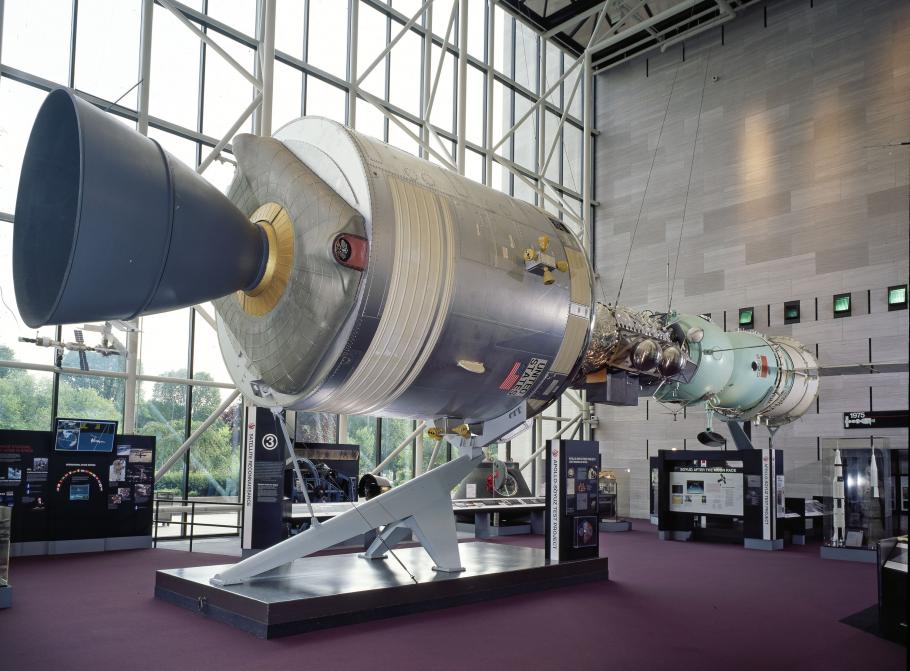The Apollo-Soyuz Test Project (ASTP) was the famous “Handshake in Space.” ASTP was the first American-Soviet space flight, docking the last American Apollo spacecraft with the then-Soviet Soyuz spacecraft. This joint effort between the two major world players was based on an agreement signed in 1972, and it set a precedent for future joint efforts, such as the Shuttle-Mir Program and the International Space Station.
ASTP also provided an opportunity for American astronauts to systematically observe and photograph the Earth from outer space, thus providing scientists with new data for exploring and studying the Earth from orbit. What most people don’t know is that the National Air and Space Museum played an important role in this aspect of the mission. Dr. Farouk El-Baz was the founding Chairman of the Museum’s Center for Earth and Planetary Studies and he was the principal investigator for the Earth Observations and Photography Experiment on ASTP. He was instrumental in getting this photogeology experiment included on the mission. Dr. El-Baz had previously trained Apollo astronauts to make visual observations while orbiting the Moon (you may have seen him portrayed in the HBO miniseries From the Earth to the Moon), and now the target was Earth. He worked with Research Assistants Delia Mitchell Warner and Sue McLafferty to plan flyovers that the astronauts performed in their T-38 aircraft so they could practice observing and photographing geologic features from above. While in space, the astronauts took some 2,000 pictures, about 750 of which were of good quality (e.g., not cloud-obscured).
Dr. El-Baz gathered a team of scientists to analyze the images in the areas of geology, oceanography, hydrology, meteorology, and more. Orbital photographs, with their large aerial coverage, permit direct study of large structures, broad distributions, and remote and inaccessible parts of the globe where size makes conventional field surveys impractical. The applications of these photographs are widespread, including updating and correcting maps, monitoring Earth resources, studying dynamic geologic processes, and surveying ocean features. The Regional Planetary Image Facility (RPIF) in the Center for Earth and Planetary Studies at the Museum houses an archive of hard copy ASTP images. In the Museum’s Space Race gallery you can see the Apollo and Soyuz spacecraft in the docked configuration. The Apollo command and service modules on display are test vehicles. The docking module that joins the two spacecraft is back-up flight hardware, and the Soyuz spacecraft is a full-scale model built by Energia Design Bureau, the organization that originally built the Soyuz.


